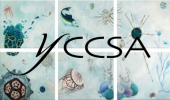© Pint of Science, 2025. All rights reserved.
Before cars and computers, satellites and Siri, our ancestors were engineering intricate technologies to aid the societies of their times. We will travel through 200,000 years of human history; visiting the Stone Age, the Vikings and the Medieval period to discover how ancient tech pioneers shaped our shared history. Don't forget your drinking horn!
Living in the Stone Age: The earliest technologies
Dr. Andy Needham
(Associate Lecturer in Palaeolithic Archaeology)
Jessica Bates
(Archaeology PhD student)
People in the Stone Age lived and thrived for million of years engineering a complex array of technologies and tools mostly made from stone. But, how did hunter-gatherers invent and develop these tools? In this talk you will handle some of the impressive objects that have been found by archaeologists and, through experimental archaeology, you will use Stone Age tools to investigate how innovative technologies were applied to daily life. We will then delve into the methods that we apply to understanding how different tools were used in the past to explore Stone Age living and landscape.
The Medieval woman with ‘blue particles’ in her teeth
Dr. Anita Radini
(Wellcome Trust Research Fellow in Medical Humanities)
As part of an international multidisciplinary collaboration, Dr. Radini has revealed the first archaeological evidence for the involvement of women in Early Medieval book production. By combining Physics and Archaeology, microscopic lapis lazuli dust has been identified in the dental tartar (mineralised plaque) of a woman who lived around 1100 AD. Only the most highly skilled scribes would have had access to the precious lapis lazuli which can be ground into a striking blue pigment. This finding reveals the potential of identifying women in the arts and manufacturing industries of the past.
Industry & Innovation in Viking Towns: combmaking
Dr. Steve Ashby
(Senior Lecturer in Archaeology)
Viking towns were centres of technology. Artisans clustered together at places like York, Dublin, Ribe (Denmark) and Birka (Sweden), making jewellery from brass, silver, and amber, weaving textiles for clothes and sails, and creating ornately decorated bead necklaces. Many are surprised to hear that one of the most important urban crafts was comb-making. Hair combs were an important commodity, and were made by a small number of artisans, with a specialised toolkit, skillset and materials. In this talk we will discuss what this classic Viking technology can tell us about life 1000 years ago.
Map data © OpenStreetMap contributors.


